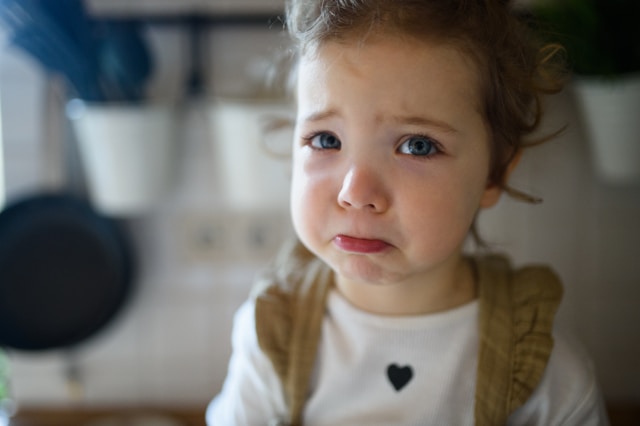
While psychopathy is most often associated with adults, many of its warning signs can begin to surface much earlier. Research suggests that warning signs of the condition can appear as early as age 3, while oftentimes, traits are visible before the age of 10. In other words, more attention needs to be paid to children when it comes to psychiatric conditions. While these childhood traits don’t always guarantee psychopathy, it’s important not to ignore them and consider talking to a professional if you notice them in a child in your life.
1. A lack of empathy, even in emotional situations
Children naturally test boundaries, but most feel bad when someone else is hurt or upset. If a child consistently shows no emotional response to other people’s distress, or even seems amused by it, it may raise flags. This isn’t about emotional immaturity; it’s a deeper absence of concern. When compassion doesn’t seem to kick in after a while, especially in situations where most kids would show care, it’s worth exploring further.
2. Cruelty to animals without remorse
Hurting animals isn’t part of normal childhood mischief. If a child intentionally harms animals, especially repeatedly, and doesn’t seem to feel guilty or upset by it, that’s a significant behavioural warning sign. That level of cruelty often points to a deeper emotional disconnect. It’s not about curiosity or ignorance—it’s about control, dominance, or a disturbing lack of emotional response to pain in other people.
3. Persistent lying, even when there’s no reason
All children lie sometimes, but habitual lying without any clear motive can suggest more than simple misbehaviour. It’s often about manipulation, deflection, or maintaining a sense of control, regardless of consequences. If the lying is clever, consistent, and not driven by fear, it might reveal a pattern that runs deeper than typical testing of limits. Especially when paired with a lack of guilt or anxiety.
4. Charms adults but bullies peers
Some children develop a split persona early on—charming, polite, and even overly helpful with adults, but cold, controlling, or even aggressive with other kids when no one’s watching. Having the ability to toggle between masks often signals a concerning level of social manipulation. It’s not about shyness or anxiety. It’s about power dynamics and knowing exactly how to perform for different audiences.
5. A strong need to dominate other people
Control-seeking is common in many kids, especially during conflict. But when a child routinely needs to dominate everyone—not just win, but humiliate or control—it might be driven by something more intense than competitiveness. This can show up in how they play, argue, or even interact socially. If the focus is always on asserting control with little regard for fairness, it’s worth noticing the bigger pattern.
6. A refusal to take responsibility, no matter what
When a child makes a mistake, it’s natural to try to dodge consequences. However, if they never accept blame, even with evidence or support, it can signal a refusal to acknowledge any fault at all. That deflection often shows up as blaming other people, rewriting the story, or denying obvious facts. Over time, it can become a way to avoid personal accountability in all areas of life.
7. Emotional flatness in high-intensity situations
In moments of fear, joy, or distress, most children express themselves clearly. But if a child consistently seems emotionally “off,” especially in high-emotion moments, it may suggest an underdevelopment of emotional response. This isn’t the same as being shy or quiet. It’s more like an emotional numbness or detachment that lingers, even when everyone around them visibly affected by something intense or upsetting.
8. A pattern of manipulating people to get what they want
Strategic thinking is part of childhood, but calculated manipulation is different. If a child repeatedly uses lies, guilt, or charm to control people for personal gain, that points to a more troubling pattern. What makes it especially concerning is when the manipulation is successful, consistent, and paired with a lack of guilt when other people are hurt or misled in the process.
9. Thrill-seeking that ignores risk completely
Many kids are drawn to a bit of mischief, but some chase danger to an extreme—ignoring clear consequences or warnings, even when they’ve previously been hurt or reprimanded. It’s not just about curiosity or adventure. This kind of behaviour often connects to a lack of fear, lack of future thinking, or an inability to associate actions with consequences, all of which are red flags.
10. A fascination with violence or suffering
Some kids explore themes of danger or power in stories and games, but when there’s a genuine fascination with violence, cruelty, or suffering, especially when it’s enjoyed or repeated, it should not be dismissed. This can show up through drawings, conversations, or the types of media they seek out. It’s the emotional reaction to these things, not just the content itself, that speaks volumes.
11. A total lack of guilt after wrongdoing
Most children feel bad after hurting someone or getting caught in a lie, even if it takes a moment to sink in. But a child who seems unaffected or amused by the harm they’ve caused is different. This isn’t just a lack of apology—it’s a true absence of internal discomfort. That missing emotional response can be one of the earliest indicators of a deeper behavioural concern.
12. Superficial charm used to avoid trouble
Charming kids often know how to turn on the sweetness to get out of a tough spot. But when that charm feels overly rehearsed or oddly well-timed, it can be more than just precociousness. Used manipulatively, charm becomes a tool to disarm, distract, or gain favour, especially if it consistently helps the child dodge responsibility or scrutiny from adults.
13. Bullying that feels calculated, not emotional
Some kids lash out in frustration or anger, but other people hurt their peers calmly and deliberately. This kind of bullying isn’t about losing control—it’s about power, control, and cold calculation. When a child hurts people with no visible emotion, and seems to enjoy the outcome, it’s not typical behaviour. That kind of calculated harm is one of the clearest early signs of something deeper.
14. Repeated rule-breaking without fear of consequences
Testing rules is part of growing up. But when a child repeatedly breaks serious rules without hesitation, and seems unfazed by punishment or disappointment, it may point to a lack of emotional connection to consequence. This often isn’t about defiance for the sake of rebellion. It can be rooted in low emotional sensitivity, poor impulse control, or simply not caring how other people feel about their actions.
15. A lack of meaningful friendships
It’s not unusual for kids to struggle socially. But when a child consistently avoids deep connections, uses friends for gain, or treats people like pawns rather than people, that’s worth noticing. Often, they may appear popular or well-liked, but the relationships are shallow and transactional. Over time, that pattern of emotional detachment becomes more visible, and more worrying.




